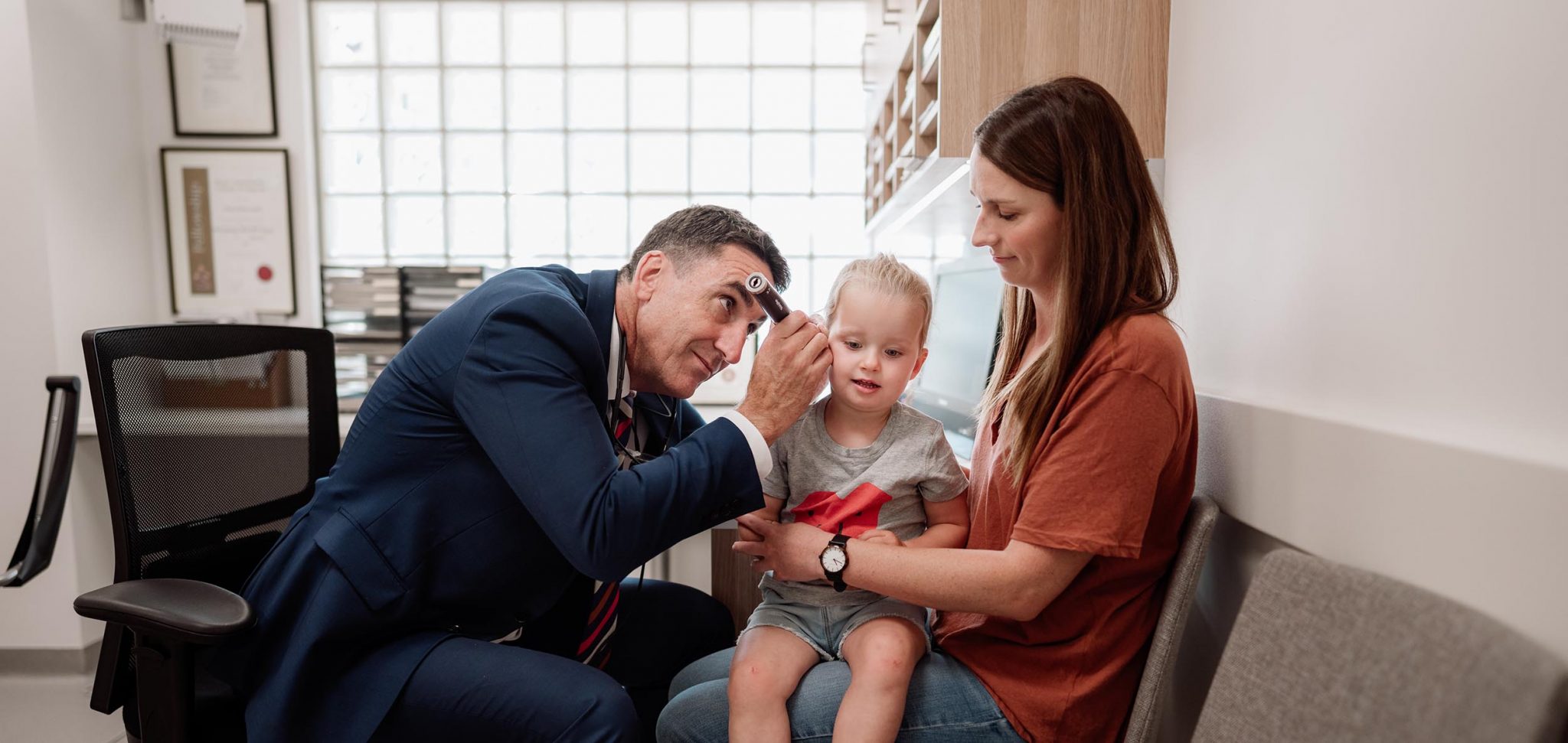If your child is experiencing hearing loss or has been recommended to undergo a grommet procedure, you’re likely to have a few questions. Despite it being a common procedure for young children, there are still many people who are unaware of what grommets are, and how they work.
Grommets are small tubes, typically made from plastic, that are inserted into a child’s eardrum in order to allow air to flow in and out of the ear. This insertion is one of the most common procedures performed on children; a procedure Dr Edward Smith of Smith ENT has plenty of experience with.
When are they required?
Grommets are the typical solution for hearing issues as a result of trapped fluid that has lasted more than three months. They are also used when children are having recurring ear infections; more than six in a period of twelve months. This fluid build-up occurs when the Eustachian Tube isn’t functioning properly; it is a necessary part of the process that maintains a constant supply of air in the middle ear.
Symptoms of blocked Eustachian Tube
Signs that your child’s Eustachian Tube is blocked:
- Feeling like their ears are ‘full’ or ‘plugged’
- Reduced hearing
- Ringing sounds in ear
- Popping or clicking sounds
- Pain or discomfort
Regardless of whether or not you suspect a blocked Eustachian Tube is to blame for your child’s hearing issues, it’s best to get them to an ENT specialist to have it confirmed and treated properly.
The procedure
Grommet insertion is typically a day procedure, with minimal post-op pain. A small incision is made in the eardrum so that the grommet can be inserted, allowing for air to pass into the blocked tube and for built up fluid to pass out of the ear. Grommets come in a range of sizes, so depending on the projected treatment time your child may need a larger size so that it stays in place until the issue has been corrected.
Aftercare
Your ENT specialist will instruct you on the correct aftercare procedures, where you will likely be instructed to use antibiotic eardrops and to use earplugs when swimming. Note that earplugs are not necessary when your child is having baths or showers.
2-3 weeks after the procedure your child will be required for a post-operative appointment to check on the grommets and advise you on the next steps. If your child is feeling any discomfort or you notice mucky discharge, contact your ENT immediately for a checkup appointment.
Speak to the friendly team at Smith ENT to learn more.
